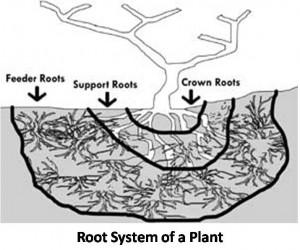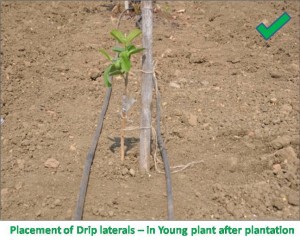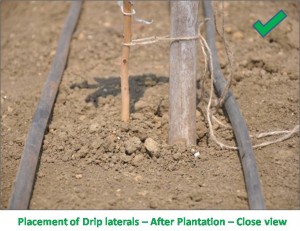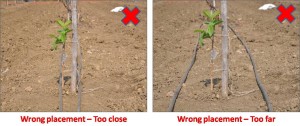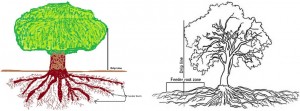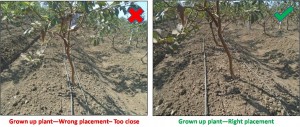Placement of Drip Laterals in VNR Bihi Guava Fruit Orchard
As we all understand, in a large VNR Bihi Guava orchard which has a sizable population of fruit trees plantation–drip irrigation is one of the most effective and efficient way to supply water and fertilizers. It will be a difficult and labour intensive exercise if water hose is moved around by hand, from plant to plant. While most of the farmers will implement drip irrigation infrastructure in their orchard it’s important to understand few basic requirements with respect to placement and effective utilization of drip laterals.
Why placements of drip laterals are important for VNR Bihi Guava Plants?
In root system of plant (or tree), feeder roots are responsible to pull or draw water and minerals from the soil. They are the carrier roots which develop around the main trunk of the plant and grow laterally in diametric pattern. The feeder roots of a plant live in top 6 to 20 inches of the soil. Source of irrigation needs to be planned keeping the position and propagative growth of feeder root system.
The Feeder roots spreads laterally in a diametric growth pattern and spreads proportionately with the growth of a plant canopy. Considering this, drip laterals needs to be placed according to growth of plant. Therefore, just after the plantation is being done drip laterals are kept in close vicinity to plant’s main stem but ensure that it does not touches the plant.
Drip laterals during the early stage of plantation should never be too close that it starts touching the main stem of the plant. Alternatively, it should neither be too far away from main stem of plant.
During various stages of plant growth one has to ensure that drip laterals are also keep moving away from the plant’s main stem but always running perpendicular to plant canopy.
Drip line placement in a growing VNR Bihi Guava Plant
Why double drip line laterals are recommended to be used for VNR Bihi Guava plantation?
In VNR Bihi Guava Plantation it is beneficial to use double drip line laterals as feeder roots propagate laterally in a diametric pattern and tend to move towards resources i.e. water and minerals which is supplied by drip line. To ensure proper development of root system and balanced anchorage on all sides of plant, it’s recommended to use double drip line laterals.
What should be the frequency of irrigation in VNR Bihi Guava Orchard?
The frequency of irrigation depends on various factors like age of plants, soil moisture levels and prevailing weather conditions. Based on these factors, irrigation schedule is prepared and watering is undertaken at required regular intervals.
However, a light irrigation of about 3 to 4 litres of water per plant is essential immediately after plantation.

